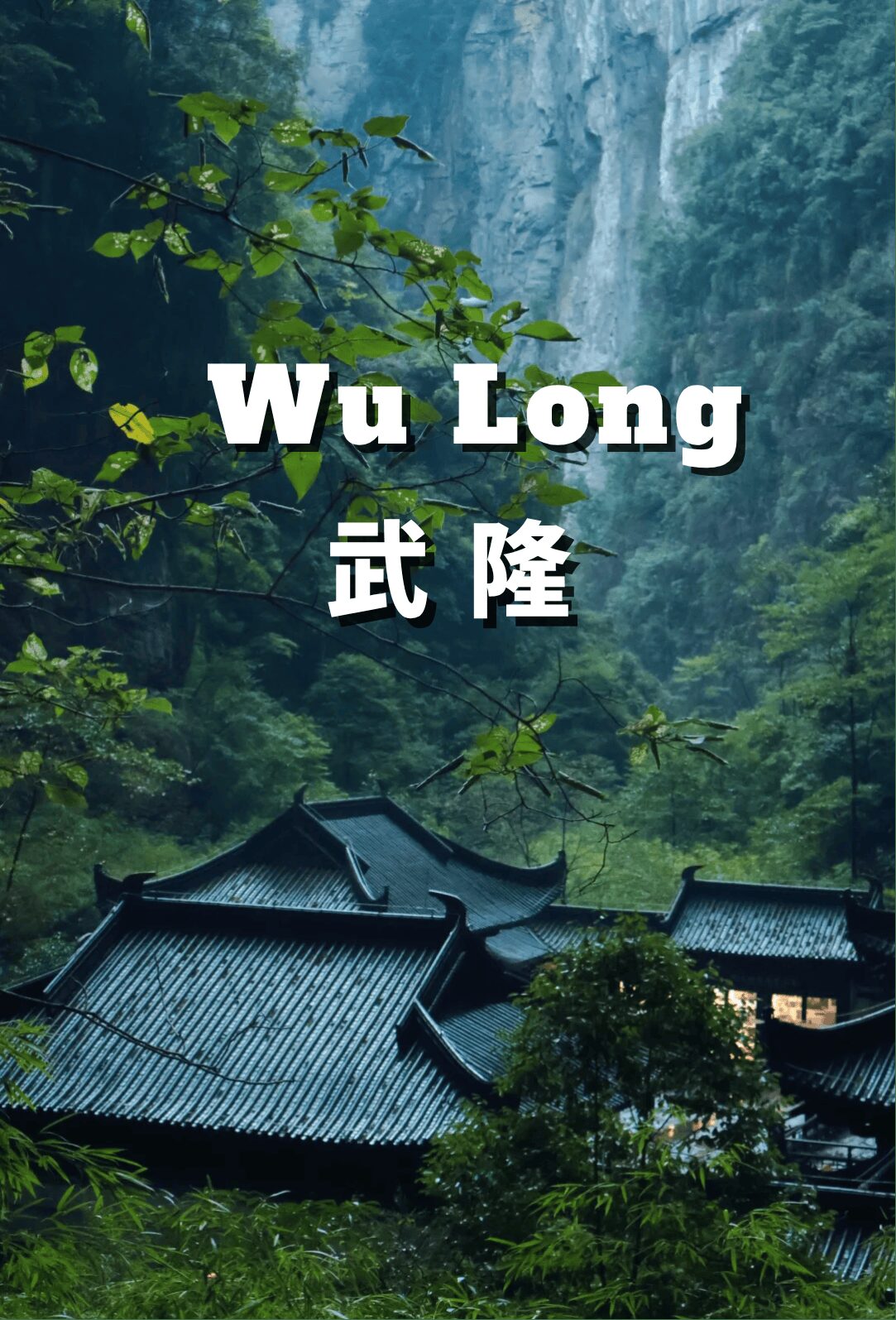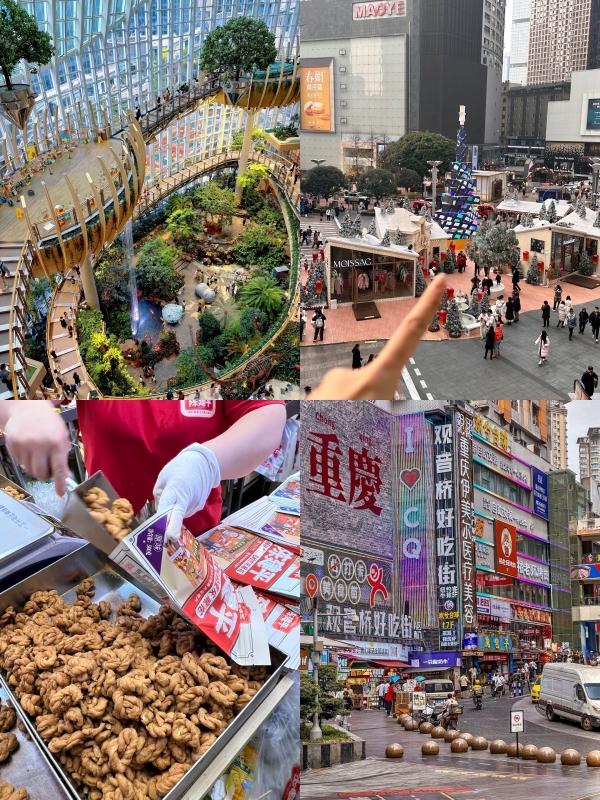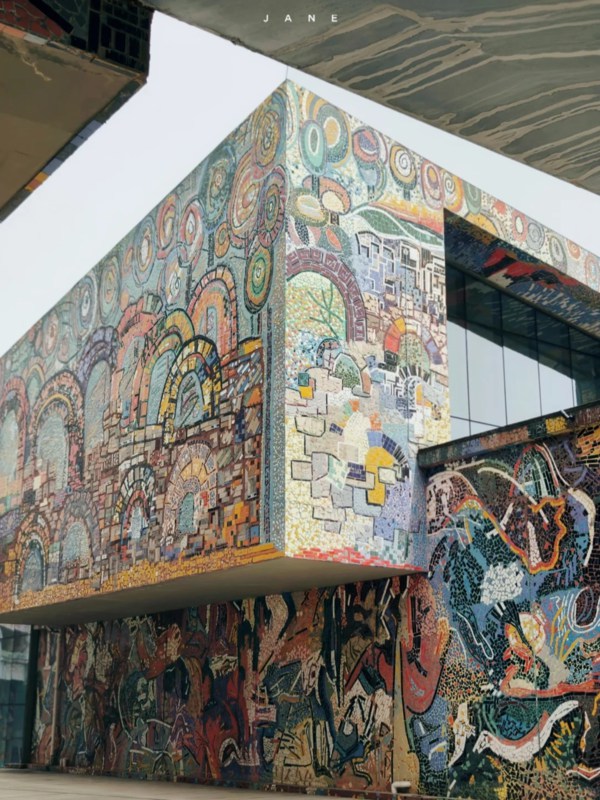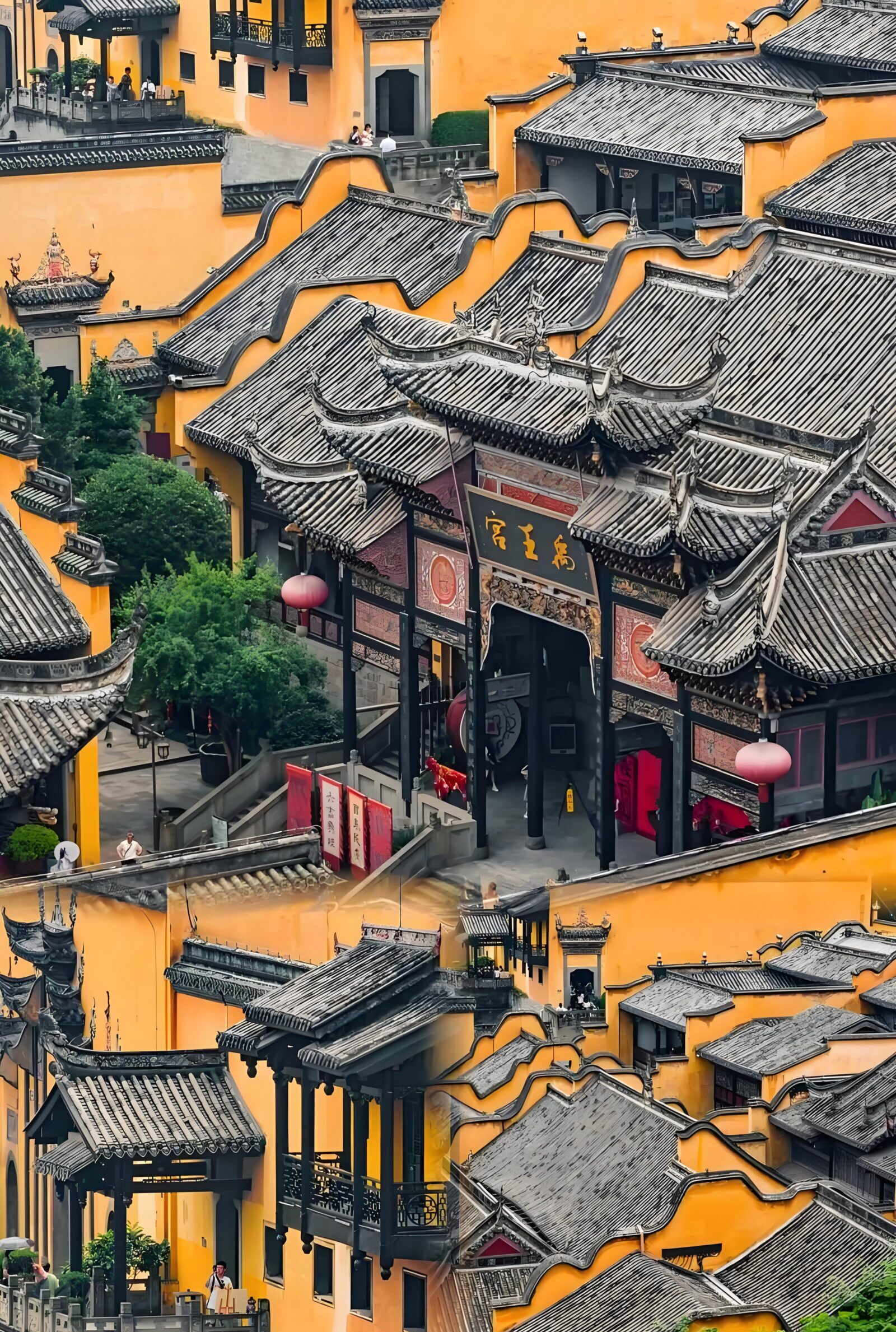If you’ve ever watched Transformers 4 and thought, “No way that canyon’s real,” well—surprise. It is. And it’s in Wulong Chongqing, tucked away in one of China’s most underrated regions. Think misty stone arches, deep caves that hum with water, and ridgelines that feel like they forgot gravity existed. Yeah, not bad for a day trip. Here’s how to make the most of it, without getting stuck behind a tour group.

Wulong Chongqing – Three Natural Bridges
Highlights of Wulong Chongqing
You’ve probably seen Wulong Chongqing before—even if you didn’t know it. That canyon with the mist curling through three stone arches in Transformers 4? Yeah, that wasn’t CGI. It’s real. And when you finally walk under one of those massive bridges, there’s this weird silence—like the cliffs are listening. The humidity clings to your arms, and the stone feels colder than it should. It doesn't look like a place built for tourists. It feels... ancient, like nature forgot to close the gate here.
What makes this place stand out isn’t just the UNESCO title (though yes, it has one). It’s how layered the experience is: karst cliffs, bottomless sinkholes, narrow trails where you suddenly lose signal—and weirdly, you stop caring. I remember seeing a rusty sign that said “Qinglong Bridge” in shaky English and Pinyin that almost got it right. That’s when it hit me—I wasn’t just sightseeing. I was inside something.
If you’re expecting a clean photo-op, you might want to reset those expectations. Wulong Chongqing is messy, moody, and seriously unforgettable.
Must-See Attractions in Wulong

Fairy Mountain
The Tiankeng Three Natural Bridges
People always tell you that Wulong Chongqing is famous for its bridges—but they rarely explain what that means. These aren’t over-river footpaths or romantic stone crossings. The Tiankeng Three Natural Bridges are towering karst arches, carved by time and something more violent, probably. They’re named after dragons—Tianlong, Qinglong, and Heilong—and when you see them, the names make sense. There’s something untamed about the shapes, like they were never meant to be walked under.
You don’t just show up at the viewpoint. The trail starts way up near the top—somewhere called Shanggu (上谷口), if I remember right—and winds down for about 30 minutes. The path is easy enough, but slippery in the shade, especially after it rains. Tour groups tend to bunch up between 10:00 and noon, so if you're the type who likes empty frames, maybe aim earlier. I once stood at a cliff curve near Qinglong Bridge, waiting for the light to hit just right. It did—for a few seconds—and the arch lit up like it was swallowing sunlight.
Fairy Mountain
Some places in Wulong Chongqing feel like scenes from a soft-focus travel magazine, and Fairy Mountain is definitely one of them. You drive just a little out from the bridge area and—boom—there it is: wide grassy meadows, patches of pine forest, and goats wandering like they own the place. If it’s spring, you’ll probably see families picnicking, kids chasing goats, and vendors selling buckets of corn like popcorn. It’s easy, open, and perfect if you’re traveling with a group.
Is it mind-blowing? Not really. If you’ve been to mountain parks in Switzerland, Colorado, or even parts of New Zealand, it might feel a little familiar—almost too tame. But then again, I remember one afternoon when fog started drifting in through the trees, and suddenly everything looked like a still from a fantasy film. And yeah, there really was a goat that followed me for a full half hour. I didn’t feed it. It just… decided I was interesting, I guess.
This is the slower side of Wulong Chongqing—no stairs to climb, no cliffs to navigate. Just cool air, scattered pine cones, and space to wander without pressure. It’s not for adrenaline junkies, but sometimes, that’s exactly what you need.
Furong Cave
Now this one feels like it belongs in a different universe. Furong Cave isn’t scenic in the postcard sense—it’s more like stepping into a neon-lit underworld. You start at a quiet little village, nothing unusual there. Then comes the cable car, the sudden drop, and bam—you’re inside a rock cathedral that honestly feels alive. The walls glisten, the air is damp, and there’s a strange silence broken only by dripping water. The colors? Let’s just say they’re not subtle. Pink and green floodlights give it that dramatic vibe you either love or squint at.
I remember losing phone signal the moment the elevator doors opened. Oddly, I didn’t mind. Without 4G, you’re forced to slow down. And honestly, when you're walking along a metal walkway suspended over underground pools, distraction isn’t what you want. It’s eerie, quiet, and—if you’ve never been in a real karst cave before—probably unforgettable.
That said, some say the ticket price is high for what it is. I think it depends on your cave experience level. If you’ve seen a dozen before, this one might feel a bit touristy. But if it's your first or second? Welcome to the darker side of Wulong Chongqing.
Wulong Day Tour Options from Chongqing

Furong Cave
Route A – Bridges and Canyon
If you want to explore both the iconic Three Natural Bridges and the dramatic Longshuixia Fissure, Route A is your best pick. It’s a full-day hike-friendly loop with scenic climbs, narrow canyons, and steep stairs—ideal for active travelers who don’t mind a little muscle burn in exchange for jaw-dropping views.
| Time | Activity |
|---|---|
| 07:30 | Pickup from hotel in Chongqing |
| 10:30 | Arrive at Three Natural Bridges entrance |
| 12:30 | Finish hiking, lunch in a local village |
| 13:30 | Arrive at Longshuixia Fissure entrance |
| 15:00 | End of canyon trail, meet your driver |
| 18:30 | Return to Chongqing city |
Route B – Bridges and Leisure Spot
Prefer a softer itinerary? Route B combines the famous natural bridges with your choice of a relaxed stop—Fairy Mountain, Furong Cave, or the wild Flying Kiss. It’s ideal for families, casual walkers, or anyone who’d rather take in views than count stairs.
| Time | Activity |
|---|---|
| 07:30 | Pickup from hotel in Chongqing |
| 10:30 | Arrive at Three Natural Bridges |
| 12:30 | Lunch at Fairy Mountain Town or Furong Village |
| 14:00 | Choose: Fairy Mountain / Furong Cave |
| 17:30 | Depart for Chongqing |
| 20:00 | Return to Chongqing city |
Essential Travel Tips for Foreign Visitors
- Longshuixia Fissure
- Fairy Mountain Scenery
Let’s start with the obvious—don’t expect perfection. Traveling through Wulong Chongqing as a foreigner isn’t difficult, but it does come with a few surprises. The bigger attractions like the Three Natural Bridges and Furong Cave all accept Alipay or WeChat, and yes, you can link a VISA or MasterCard if you're using the international version. Most entry tickets can also be booked on Trip.com (search for the English version). That said, once you’re outside the core scenic zones, things get a bit old-school. Small vendors might only take cash, and exact change helps. I'd say have ¥200 on hand, just in case your corn-on-the-cob or bottled tea can’t be paid for with a QR code.
As for signs? You’ll find English—or at least Pinyin—at the entrances and main paths. But once you're deeper in, don’t count on it. Some signs are... creative. I saw “Bridge Go There Please” once. It made sense, but still. If you don’t speak Chinese, have Gaode Map (international version) or Google Translate ready. You’ll use both, probably more than you think.
And if you’re staying overnight? Choose carefully. Not every hotel accepts foreign passports. Go for places like Hilton Fairy Mountain or Wulong International Youth Hostel, which do. Rooms run around ¥300–¥800, depending on season. But book early—holiday weekends can fill up before you even think about going.
Wulong feels like a world apart, but it’s just one side of Chongqing.Need more Chongqing travel ideas? This list has you covered.
Frequently Asked Questions (FAQs)
Q: Is it easy to get to Wulong from Chongqing by public transport without speaking Chinese?
It’s doable, but not seamless. While the high-speed train from Chongqing North to Wulong is fairly straightforward, finding your way from Wulong station to the scenic spots (like Three Bridges) can be tricky without a Chinese-language app or local help. Signs are mostly in Chinese, and buses can be confusing if you can’t read Pinyin. If you’re traveling solo and don’t speak Chinese, consider pre-booking a local guide or using a bilingual driver—it removes 80% of the stress.
Q: Can I visit Wulong in winter? Are the main attractions open all year round?
Yes, Wulong is open year-round, including winter. The karst formations, like the Three Natural Bridges and Furong Cave, stay accessible even in colder months. However, some areas (like Fairy Mountain) may be covered in snow and certain local bus routes could be limited. Dress in layers, bring gloves, and check if your hotel has heating—it’s not guaranteed in smaller village inns.
Q: What’s the difference between Wulong and Zhangjiajie? Which one should I choose?
Great question—and a common one. Wulong and Zhangjiajie both offer incredible karst landscapes, but they’re very different in vibe. Wulong is less commercial, easier to explore in one day, and quieter overall. Zhangjiajie is more dramatic, with towering stone pillars and that famous glass bridge, but it’s also much more crowded and spread out. If you're short on time and want something low-key and cinematic, Wulong is your pick. If you’ve got a few days and love mountain hikes, Zhangjiajie delivers big views.
Q: Are there safety concerns when hiking the canyon or cave areas in Wulong?
Generally, no—it’s very safe. Paths in places like Longshuixia Fissure and Furong Cave are maintained well, with railings and clear directions. That said, rain makes the stone paths slippery, and there aren’t always staff around. Don’t hike alone if visibility is low. And wear real hiking shoes, not fashion sneakers—you’ll thank yourself halfway down a wet stairway.
Q: Can I include Wulong as a stopover if I’m heading to other major destinations in southwest China?
Yes, but plan carefully. Wulong is somewhat out of the way—it’s southeast of central Chongqing, and not directly connected to places like Chengdu or Guilin. You’d need to route through Chongqing or Fuling. If you're building a longer trip through southwest China, Wulong works best as a 1–2 day side trip before heading deeper south or looping back to the city.




